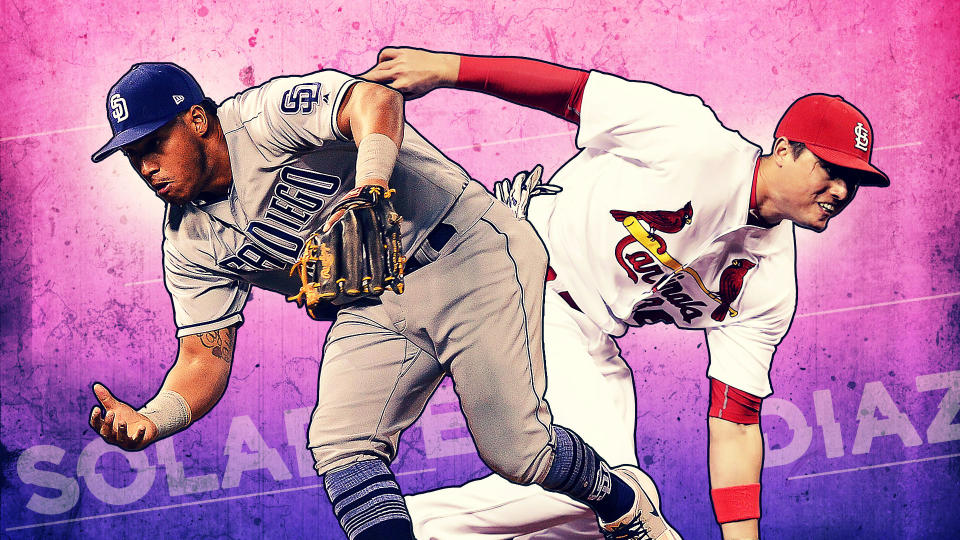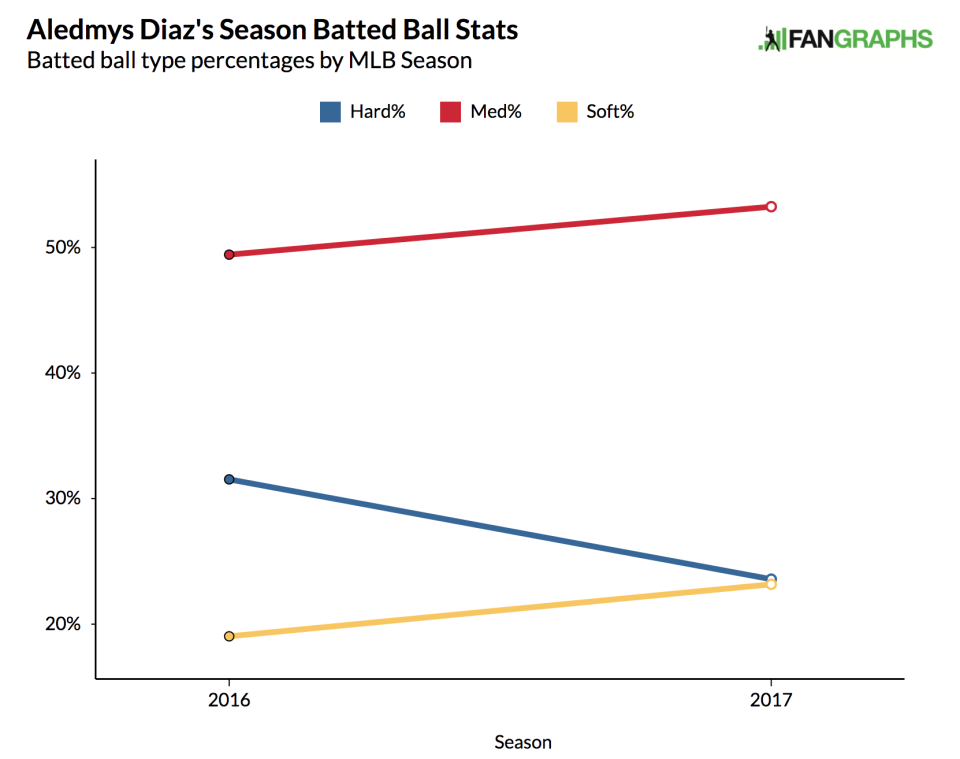Blue Jays' recent infield deals don't come without risk

So far this offseason the Blue Jays have been criticized for their lack of moves, but the ones they’ve made have been well reviewed.
The club’s need for middle-infield depth was no secret and the trades for both Yangervis Solarte and Aledmys Diaz addressed that area of weakness without gutting the club’s prospect depth. Both are significant upgrades over the likes of Ryan Goins and Darwin Barney, plus they come with significant team control. Neither is enormously exciting – although Diaz had quite the 2016 – but both deals seem like smart little transactions.
It’s pretty easy to think of that as the beginning and end of it. However, it’s worth considering the rationale behind the trades from the other side. Why would the St. Louis Cardinals give up on Diaz one year removed from an All-Star season for a relatively meagre prospect return? Why would the San Diego Padres move a versatile and controllable player like Solarte for a low-level prospect and pure lottery ticket?
[Follow Yahoo Canada Sports on Facebook | Instagram | Twitter]
The answer in both cases is surprisingly similar. Not only are both players coming off down years (Solarte and Diaz combined for 5.5 WAR in 2016 compared to 1.3 in 2017), they saw their contact quality crater last season.
Diaz’s went from hitting .300/.369/.510 to .259/.290/.392 and it was almost all related to how the ball came off his bat. His did have a decline in walk rate, but with his strikeouts remaining the same he still put the ball in play – just in a far less impressive fashion.
Here’s what his batted balls looked like according to FanGraphs‘ “Soft”, “Medium” and “Hard” categories.

In more precise terms, there is a serious drop in his exit velocity and percentage of balls hit above 95 mph and barrels.

Solarte’s progression from 2016 to 2017 is much the same. He even raised his walk rate and reduced his Ks, but still saw his production go down. By the same batted measures, it’s not hard to notice how his decline mirrors Diaz’s.

Although Solarte’s barrel rate is strangely flat, the overall exit velocity numbers were ugly in 2017, something that certainly contributed to his unusually-low .258 BABIP.

So, both of the players the Blue Jays brought aboard hit the ball significantly less hard last year than they had in the past. So not only are they coming off poor seasons, they are coming off poor seasons that seem earned as opposed to a result of random chance.
Frankly speaking, that’s about all we know. Exit velocity is a statistic that has only recently entered the public sphere. We’re not 100 percent sure if it’s the symptom of the disease yet. It’s too early to say with much confidence how permanent surges – or in this case dips – are likely to be. Perhaps it’s oversimplifying to say what we know is “high exit velocity good, low exit velocity bad”, but we’re not that far from a Tarzan-esque level of understanding.
Even so, this exit velocity data (or some more sophisticated proprietary version) probably played a role in the decisions the Padres and Cardinals made to relinquish Solarte and Diaz. The wisdom of those choices will come into focus in 2018.
Perhaps these exit velocity numbers foretell poor seasons for the pair and represent a warning signs the Blue Jays shouldn’t have ignored. Perhaps batted ball troubles like this are just what down years look like, and now we have better tools to measure them. Maybe bouncebacks are in order.
As usual, the smart money is on Solarte and Diaz producing somewhere in the gap between their 2016 and 2017 seasons. Pretty much anywhere in that chasm would be good enough for the Blue Jays, considering the small price they paid and the poor production of the pair’s predecessors.
Even so, there remains the very real chance the club has bought in on two players in the midst of serious declines. Considering their ages (30 and 27), that seems improbable, but if it’s far from impossible. If it was, there’s no way San Diego and St. Louis would have let them go.
More MLB coverage on Yahoo Sports:

 Yahoo Sport
Yahoo Sport 







































